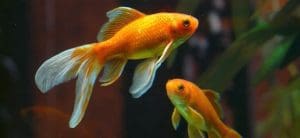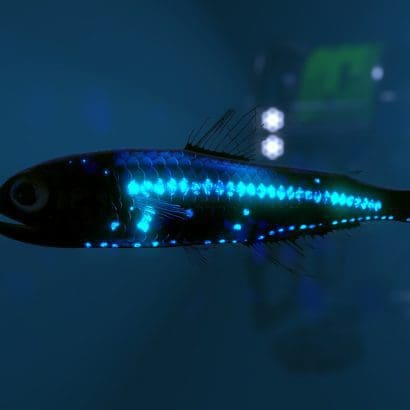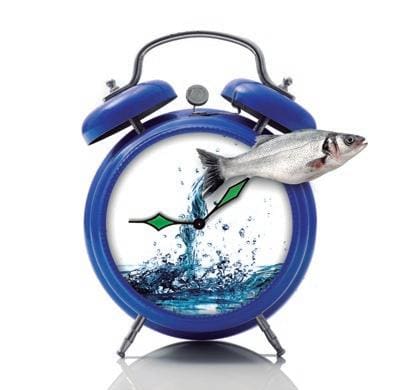
Fish are an incredibly diverse group of creatures, with a wide range of sizes, shapes, and lifespans. While some fish species have relatively short lifespans, there are others that defy expectations by living exceptionally long lives. The question arises: why do some fish species have such long lifespans?
In this article, we will explore the fascinating factors that contribute to the longevity of certain fish species. From genetic adaptations to environmental influences and reproductive strategies, we will delve into the intricate mechanisms that allow these remarkable creatures to defy the passage of time.
Understanding why some fish species have long lifespans is not only a matter of curiosity but also has broader implications. Exploring the secrets behind their longevity can provide valuable insights into the biology of aging, with potential applications in fields such as medicine and human longevity research.
Contents
Genetic Factors.
Genetic factors play a significant role in various aspects of an organism’s biology, including its lifespan. When it comes to fish species and their lifespans, genetic factors contribute to the exceptional longevity observed in certain species.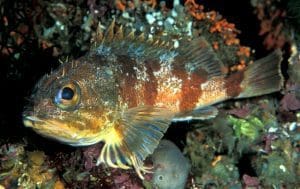
Gene Expression and Longevity:
-
- Specific genes can directly influence the lifespan of fish species. These genes may control various biological processes, such as DNA repair mechanisms, stress response, and metabolic regulation.
- Mutations or variations in certain genes can enhance an organism’s ability to resist aging and promote longevity. These genetic variations can be present in specific populations or species.
Telomeres and Aging:
-
- Telomeres, protective caps at the ends of chromosomes, play a crucial role in cellular aging. Each time a cell divides, telomeres shorten, eventually leading to cellular dysfunction and senescence.
- Fish species with longer telomeres, or with the ability to maintain their telomeres more effectively, may experience slower cellular aging and consequently have longer lifespans.
Genetic Diversity and Longevity:
-
- Genetic diversity within a population or species can influence lifespan. Higher genetic diversity can increase the chances of harboring beneficial genetic variations associated with longevity.
- Populations with lower genetic diversity may be more susceptible to environmental changes or disease, potentially impacting their lifespan.
Evolutionary Selection for Longevity:
-
- Evolutionary pressures can drive the selection of genes favoring longer lifespans in specific fish species. Longevity may provide advantages such as increased reproductive opportunities or enhanced survival in challenging environments.
- Over time, natural selection can act upon genetic variations related to longevity, leading to the prevalence of these traits in certain fish species.
Environmental Factors.
Environmental factors play a crucial role in shaping the characteristics and lifespans of fish species. The conditions in which fish live, including their habitat, water quality, temperature, and food availability, can greatly influence their longevity.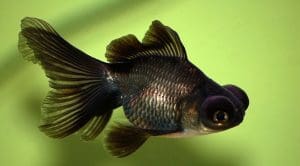
Water Quality:
-
- The quality of the water in which fish reside is essential for their overall health and lifespan. Clean and unpolluted water provides optimal conditions for fish to thrive and live longer.
- High levels of pollutants, such as heavy metals or toxins, can negatively impact fish health, leading to shorter lifespans and increased susceptibility to diseases.
Temperature:
-
- Temperature is a critical environmental factor that affects fish metabolism, growth, and overall lifespan. Different fish species have specific temperature ranges within which they can thrive.
- Fish adapted to colder waters tend to have slower metabolisms, which can contribute to longer lifespans. Conversely, species living in warmer environments may have shorter lifespans due to higher metabolic rates and increased energy expenditure.
Food Availability:
-
- The availability of suitable food sources directly influences fish growth, development, and longevity. Adequate nutrition plays a vital role in maintaining optimal health and extending lifespan.
- Fish species with access to a diverse and abundant food supply are more likely to have longer lifespans compared to those facing food scarcity or imbalances in their diet.
Predation and Competition:
-
- The presence of predators and competition for resources can impact fish survival and lifespan. High predation pressure can lead to shorter lifespans as fish face increased mortality risks.
- In contrast, fish species that occupy lower trophic levels or inhabit environments with fewer predators may experience reduced predation-related mortality, allowing them to live longer.
Habitat Stability:
-
- The stability of a fish’s habitat is crucial for its longevity. Fish living in stable and well-preserved environments with minimal disturbances are more likely to have longer lifespans.
- Habitat destruction, pollution, and other environmental disruptions can disrupt fish populations, leading to shorter lifespans and decreased overall resilience.
Reproductive Strategies.
Reproductive strategies in fish play a fundamental role in shaping their lifespans and life histories. Different fish species employ diverse reproductive strategies that can have a significant impact on their longevity. Understanding these strategies provides insights into the evolutionary adaptations and trade-offs associated with reproduction and lifespan.
Early Reproduction and High Fecundity:
-
- Some fish species adopt a strategy of early reproduction and high fecundity, where individuals reach sexual maturity at a young age and produce a large number of offspring.
- By investing heavily in reproduction at an early stage, these species prioritize quantity over individual offspring quality.
- This strategy often results in shorter lifespans as individuals allocate significant energy towards reproduction, potentially compromising their own survival and longevity.
Late Reproduction and Low Fecundity:
-
- In contrast, other fish species exhibit a strategy of late reproduction and low fecundity.
- Individuals of these species delay their reproductive efforts, typically until they reach a larger size or more favorable environmental conditions.
- By investing more resources in individual offspring quality, these species have a higher chance of successful reproduction and increased survival, leading to longer lifespans.
Iteroparity and Semelparity:
-
- Fish species can be classified into two reproductive categories: iteroparous and semelparous.
- Iteroparous species exhibit multiple reproductive events throughout their lives, often with intermittent periods of reproduction.
- Semelparous species, on the other hand, reproduce only once in their lifetime, typically after a long period of growth and development.
- Semelparity is often associated with shorter lifespans as individuals invest heavily in a single reproductive event, after which they may die.
Parental Care:
-
- Parental care is another important aspect of reproductive strategies in fish.
- Some species invest significant time and energy in caring for their offspring, providing protection, nourishment, and guidance.
- The presence of parental care can increase offspring survival rates, leading to longer lifespans for both parents and offspring.
Biological Adaptations.
Biological adaptations in fish are remarkable evolutionary features that contribute to their survival, resilience, and longevity. These adaptations encompass a wide range of physiological and anatomical characteristics that enable fish species to thrive in their respective habitats and face the challenges of their environments. Understanding these biological adaptations provides insight into the factors that contribute to the long lifespans observed in certain fish species.
Slow Metabolism:
-
- Some fish species exhibit a slower metabolic rate compared to other animals. This slower metabolism allows for reduced energy expenditure and can contribute to extended lifespans.
- A slower metabolic rate may result in slower growth and development but can also help minimize oxidative stress and decrease the production of damaging free radicals.
Enhanced DNA Repair Mechanisms:
-
- Efficient DNA repair mechanisms play a critical role in maintaining the integrity of genetic material. Some fish species have developed enhanced DNA repair processes that help prevent the accumulation of DNA damage over time.
- These mechanisms can repair and correct genetic mutations, reduce the impact of aging-related damage, and contribute to increased longevity.
Resistance to Oxidative Stress:
-
- Oxidative stress, caused by the imbalance between the production of reactive oxygen species (ROS) and the ability of the organism to counteract their damaging effects, is associated with aging.
- Certain fish species have developed adaptations to mitigate oxidative stress, such as antioxidant defense systems and efficient detoxification processes. These adaptations help protect cells and tissues from oxidative damage, potentially extending their lifespan.
Efficient Cellular Repair and Maintenance:
-
- Fish species with long lifespans often possess robust cellular repair and maintenance systems. These systems help repair damaged proteins, clear cellular debris, and maintain cellular function.
- Enhanced cellular repair and maintenance mechanisms contribute to maintaining overall physiological integrity, improving resistance to age-related diseases, and promoting longevity.
Anti-Aging Molecules:
-
- Some fish species produce unique molecules with anti-aging properties. These molecules may have antioxidant effects, regulate cellular processes, or promote longevity through various mechanisms.
- Examples include certain proteins, peptides, and hormones that have been identified in fish species and may contribute to their extended lifespans.
The Importance of Studying Longevity in Fish.
Studying the longevity of fish species holds significant importance in the scientific community and beyond. By unraveling the factors that contribute to their extended lifespans, researchers can gain valuable insights into the biology of aging, ecological dynamics, and even potential applications in human health and longevity research.
Understanding the mechanisms behind the long lifespans of certain fish species provides a window into the remarkable adaptations that enable these aquatic creatures to withstand the test of time. By studying their genetic factors, environmental influences, reproductive strategies, and biological adaptations, scientists can uncover valuable information about the aging process and potential strategies for extending human lifespans.

